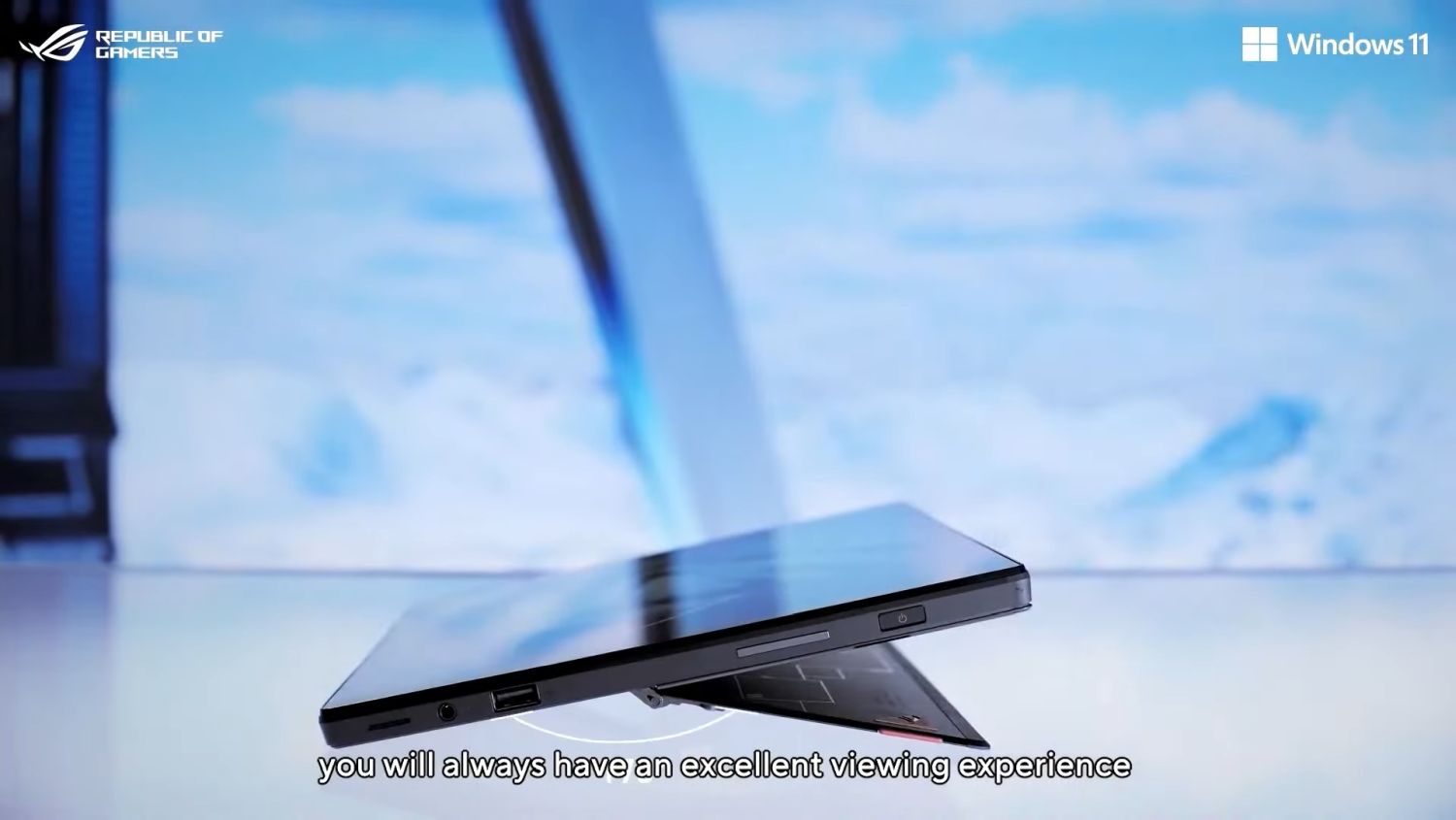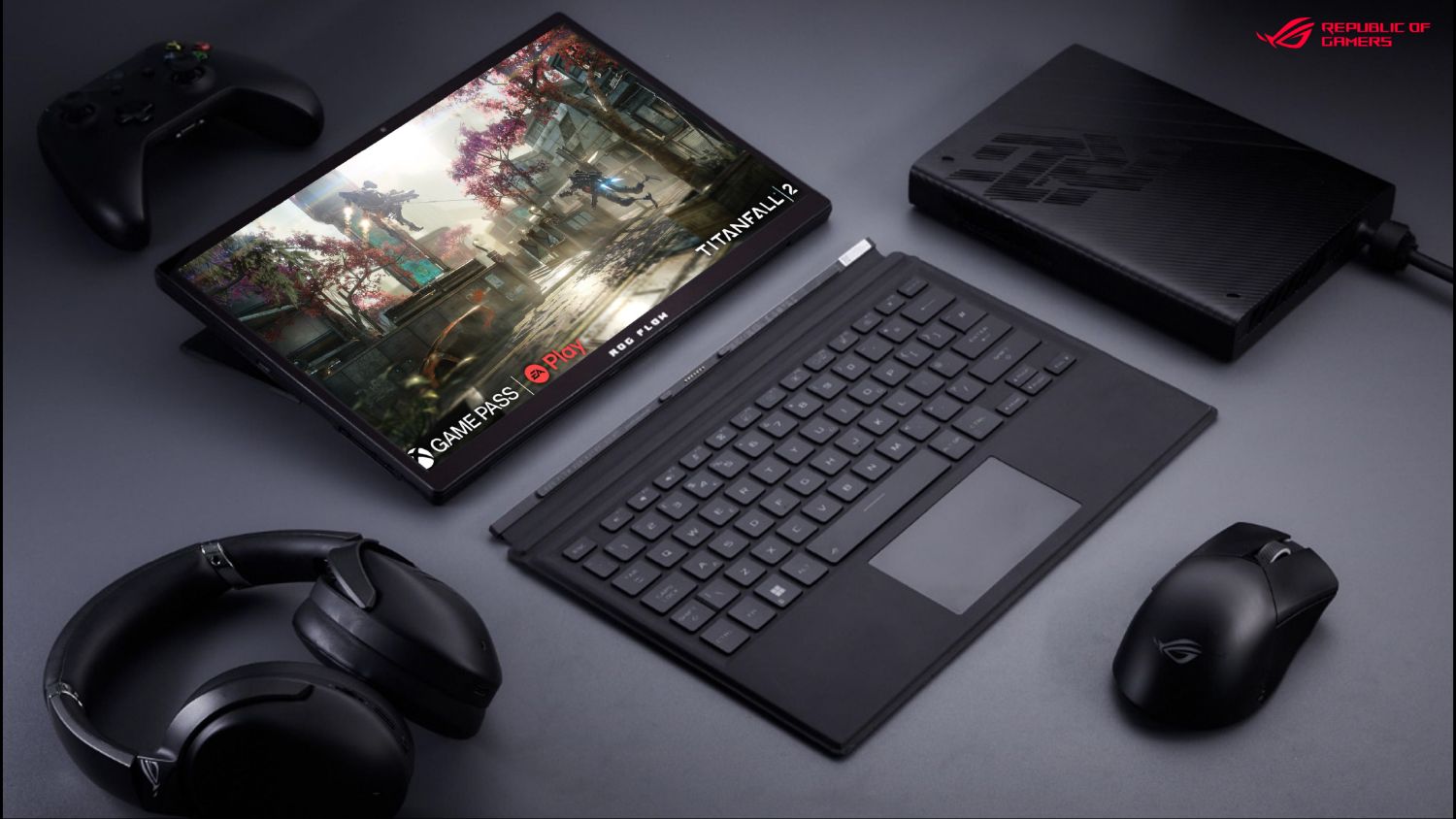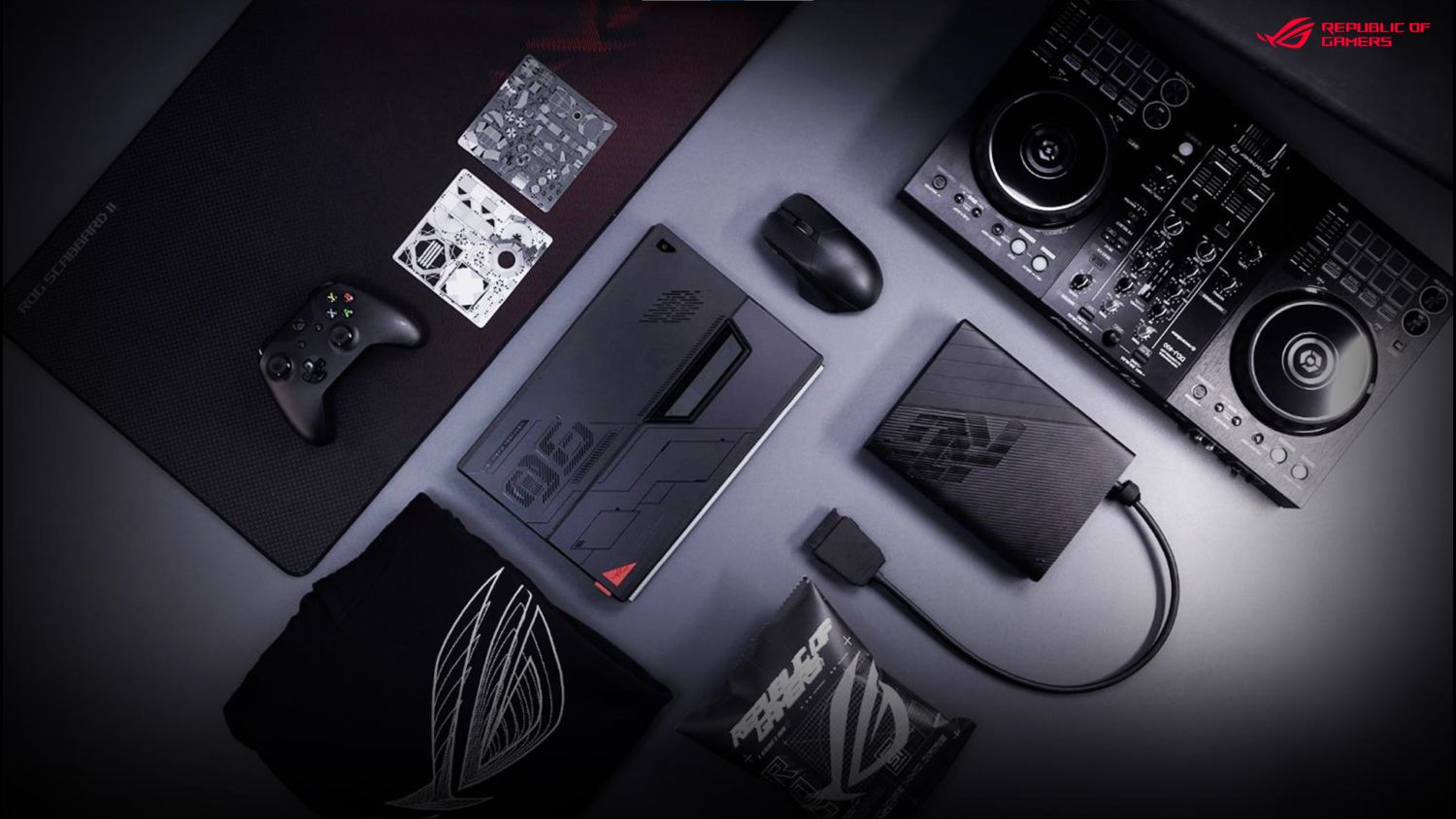As ASUS mentioned, the Z13 seems to takes its inspiration from the ROG Mothership, the brand’s desktop replacement solution that we saw in-person during CES 2019. Like all tablet form factors, the Z13 has a detachable keyboard cum cover that protects its 13.3-inch touchscreen display. Further, users will have two choices of display resolutions: either a Full HD panel with 120Hz refresh rate, or a 4K60Hz display. Regardless of choice, both the aspect ratio and peak brightness levels are set at 16:10 and 500 nits, respectively. Circling back breifly to the detachable keyboard cover, the component does have RGB LEDs, as well as a key travel distance of 1.7mm per key. Like all tablet cum laptops, the Z13 is affixed with a sturdy kickstand that opens up to 170°, allowing for more extreme or unorthodox viewing angles. Beneath the hood of the Z13, though, it’s clear that ASUS has spared no expense in making this a mini-behemoth, capable of trading blows with even the most hardcore of machines. Relatively speaking, of course. Off the bat, the Z13 is packing a Core i9-12900H CPU, which is Intel’s top-of-the-line 12th generation, 14-core mobile CPU, and sitting by its side is an NVIDIA GeForce RTX 3050 Ti discrete GPU with a Mux Switch. To maximise cooling on both components, ASUS is using a new Vapour chamber design, similar to the ones currently being used with its Zephyrus lineup. Specifically, the Vapour Chamber in the Z13 envelops around 44% of the mainboard. Combined with the orientation, placement of both components inside, the use of liquid metal, ROG Intelligent Cooling, and vents at the top of the laptop, ASUS says that this allows for greater access to more fresh air, compared to “traditional gaming designs” of other gaming notebooks. Promising between 5°C and 8°C lower temperatures, even at peak performance. Still, on the subject of cooling, the Taiwanese brand says that even when the dual fans are spinning at maximum performance, the decibel levels will not exceed 40Db. What sounds even more impressive, though, is its claim that the Z13 can operate at 0Db with some light tasks. That said, the Z13 does only have a 56WHr battery inside but we’re going to reserve judgement on the matter until we get a unit for testing. On that note: yes, charging for the laptop will be conducted via USB-C. Of course, as the Z13 is a device under the ROG Flow lineup, the gaming tablet can be paired with ASUS’ XG Mobile eGPU module, thus granting users access to the more powerful GeForce RTX 3080 Mobile, additional I/O ports, or a LAN port. For that matter, ASUS also says that it will be releasing a 2022 model of the XG Mobile and that it will house a mobile GPU that is capable of accommodating up to 165W of power and a new copper Vapour Chamber at launch. Standalone, the ASUS ROG Flow Z13 is set to retail for US$1899 (~RM8000), but no specific availability date has been announced. There’s also no word if ASUS intends to sell this as part of a bundle with the Z13 upon availability in Malaysia, or if it will allow consumers to purchase it separately from the get-go.




